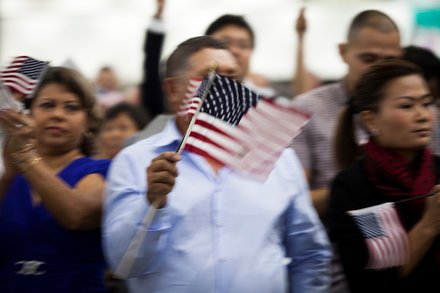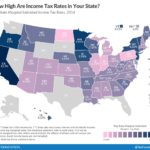Three news items emerged today that demonstrate how the states least affected by immigration are not doing well economically or socially, yet they stand as the most vocal supporters of President Trump’s attempts to limit legal immigration.
The states and cities with the strongest, growing economies attract foreign-born entrepreneurs and future CEOs, college grads from overseas with backgrounds in science, medicine and engineering, international students, and foreign workers receiving temporary U.S. visas. And their voters oppose immigration restrictions.
States and counties that shun immigrants tend to suffer more from unemployment, lack of new businesses, stagnant populations, stifled small towns, poverty and drug abuse. And their voters blame immigration for many of their problems.
David Brooks, a centrist columnist for the New York Times, wrote in his piece today that the data clearly shows that healthy immigration is a socioeconomic plus and that areas systematically lacking an infusion of immigrants suffer the consequences:
You don’t have to rely on pointy-headed academics. Get in your car. If you start in rural New England and drive down into Appalachia or across into the Upper Midwest (including northern Michigan) you will be driving through county after county with few immigrants. These rural places are often 95 percent white. These places lack the diversity “restrictionists” say is straining the social fabric.
Are these counties marked by high social cohesion, economic dynamism, surging wages and healthy family values? No. Quite the opposite. They are often marked by economic stagnation, social isolation, family breakdown and high opioid addiction.
Ronald Brownstein published an analysis of Census and voting numbers today on CNN’s website that found the Republican Party is strongest in places that remain the least touched by immigration, while Democrats fare best in places with the most foreign-born immigrants.
Put another way, places with the least exposure to immigrants stridently favor limits on migration, while places with the biggest immigrant populations enthusiastically support the diversity and dynamism they bring.
In the 2016 elections,17 of the 19 states with immigrant populations of less than 5 percent voted for Trump. More specifically, exit polls showed that Trump racked up huge support among those who have had few experiences with immigrants yet want to build a border wall and deport all undocumented workers, including the young adults known as Dreamers.
In Washington, Republican lawmakers pursue policies that would mark the biggest reduction in legal immigration since the 1920s, a cumulative reduction of 40 to 50 percent. At the same time, Brownstein writes, “more local officials from both parties across the heartland are trying to attract immigrants they consider indispensable to their strategies for maintaining economic vitality and a critical mass of population.”
Among those officials is Michigan Gov. Rick Snyder. Michigan’s foreign-born population amounts to just 6.4 percent, with the vast majority of those people living in southeast Michigan, but that category of workers and college students provides enough economic oomph to rank the state 14th in benefits from immigration.
That’s according to a study published today by the folks at Wallethub.com, who specialize in gathering up rough data and polishing it until a fresh demographic picture of America emerges.
Michigan’s relatively strong ranking is based in part on Wallet Hub’s rating of the state as sixth best in the “brain gain and innovators” category. That’s a measurement of the 50 states based on four factors: foreign-born population with a bachelor’s degree or higher, foreign-born workers with a degree in STEM (science, technology, engineering or math), H1-B visa holders who are specialists in various professions, and the presence of Fortune 500 companies that were founded by immigrants or their children.
The top states in the overall Wallet Hub rankings are located almost entirely on the East or West coasts, such as California, New York, New Jersey, Massachusetts and Delaware. The worst states are mostly in the South and West – Mississippi, Louisiana, Wyoming, Montana and South Carolina.
Similarly, Brownstein found that the states with the least interaction with immigrants are some of the reddest, Pro-Trump states in the nation: West Virginia, Mississippi, Montana, Wyoming, North Dakota, Alabama, Kentucky and South Dakota.
Here’s a bit more from Brooks on the infusion of talent, enthusiasm and work ethic that immigrants bring to the United States:
Between 2014 and 2016 the counties that embrace diversity accounted for 72 percent of the nation’s increased economic output and two-thirds of the new jobs. The approximately 85 percent of counties that support restrictionists like Donald Trump accounted for a measly 28 percent of the growth.
Republicans’ problem is that … they have embraced a cultural model that produces low growth and low dynamism. No wonder they want to erect a wall.
Photo: CNN screenshot











